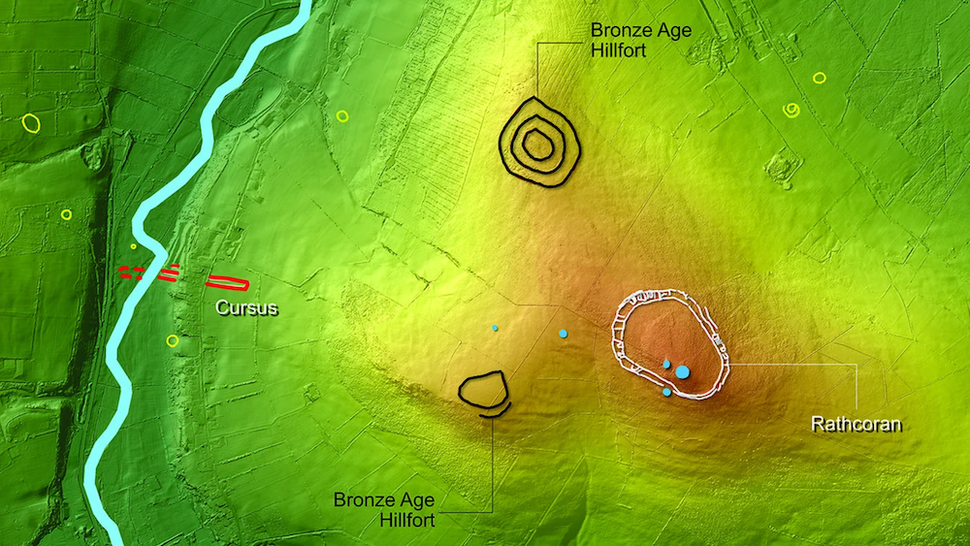Lasers reveal prehistoric Irish monuments that may have been 'pathways for the dead'
By Jennifer Nalewicki published 12 hours ago
Archaeologists used lidar to detect a cluster of rare Neolithic monuments hidden in farmland in Ireland.

A lidar image of the Irish countryside showing monuments detected
Lidar imaging of one of the five curus monuments (seen in red) found at the prehistoric site in Ireland. (Image credit: James O'Driscoll; Antiquity Publications Ltd)
Lasers have revealed hundreds of previously undetected prehistoric monuments, including five rare ones, clustered in a swath of farmland in the Irish countryside.
Archaeologists discovered the monuments in Baltinglass, a town in County Wicklow in eastern Ireland, using lidar (light detection and ranging), a technique in which an aircraft flies overhead while a machine shoots laser pulses toward the ground. These pulses hit objects and then bounce back, helping researchers map the landscape's topography.
The area examined by the researchers was occupied during the Early Neolithic (beginning around 3700 B.C.) and the Middle to Late Bronze Age (1400 to 800 B.C.). However, evidence of occupation during a 2,000-year stretch between the two periods, known as the Middle Neolithic, has been scarce — until now, according to a study published Thursday (April 25) in the journal Antiquity.
Despite years of agricultural plowing that had damaged some of the monuments, lidar revealed three-dimensional models of the landscape peppered with structures, including several "rare" cursus monuments, which are long, narrow, large-scale earthwork enclosures that may have had a ritual purpose. The grouping is considered the largest cursus cluster in both Ireland and Britain, according to a statement.
More:
https://www.livescience.com/archaeology/lasers-reveal-prehistoric-irish-monuments-that-may-have-been-pathways-for-the-dead
